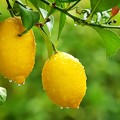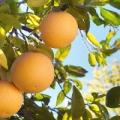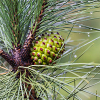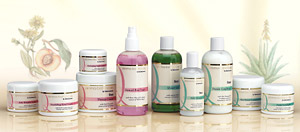Bergamot Essential Oil – Benefits, Usage & more
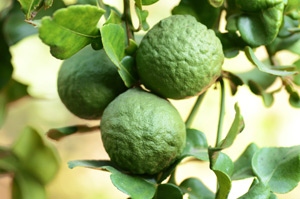 Bergamot essential oil is extracted from the fruit of a small tree, known botanically as Citrus aurantium subsp. bergamia.
Bergamot essential oil is extracted from the fruit of a small tree, known botanically as Citrus aurantium subsp. bergamia.
Exactly where this tree originated has never been properly established, despite various theories regarding its true origin and cultivation.
The most plausible theory regarding its source claims that Christopher Columbus brought the bergamot tree back on a voyage from the Canary Islands to Barcelona, Spain.
From Spain it was introduced into the Italian city of Bergamo, Lombardy, where the oil is reported to have been first produced. Many people believe that this is where the name of this tree originates. Whatever its route, the bergamot fruit ended its journey in Calabria, Southern Italy, which remains the world’s largest producing region of bergamot essential oil today.
Physical description
Originally, bergamot trees were grown from seeds or cuttings, but in 1862 root-rot destroyed virtually all the citrus orchards in Calabria. Since that time, bergamot trees have been cultivated by first raising bitter orange trees and then grafting bergamot fruit or buds onto them. The resulting plant is a small evergreen that reaches a height of about 3 metres (10ft) in cultivation, with a smooth brown trunk, stout branches, and flexible twigs with rather blunt thorns.
The bright green leaves are broad-ovate, glossy and highly aromatic, and the fragrant white flowers bloom from March to May in Italy. The small fruits ripen from green to yellow, resembling a small orange about 7.5 cm (3 inches) in diameter. Although C. aurantium subsp. bergamia is a hardy tree, bergamot fruit is the most delicate of all citrus and is easily damaged by frost.
There have been many attempts to produce bergamot groves commercially in other areas, but with the exception of Argentina, Brazil, Guinea, Ivory Coast and Sicily, most ventures have failed due to climate, soil or irrigation problems.
Traditional uses
Both the fruit and essential oil have been used in folk medicine since the 16th century, initially in Italy and then later throughout Europe as its popularity began to spread. At first it was employed for its antiseptic properties and its ability to reduce a fever, and later during Napoleonic times it became popular as a fragrance. It is still used today in high class perfumes, ‘eau de Toilette’s’ and most famously, Earl Grey tea.
The bergamot essential oil trade thrived until 1972, when evidence began to emerge suggesting that a component in the oil called bergapten (a furanocourmarin) was phototoxic and was responsible for causing skin sensitising and pigmentation problems when skin care products containing bergamot oil had been used and exposed to sunlight. The threat of this skin reaction caused the fragrance market to adopt the use of synthetics, and demand for the natural oil plummeted dramatically.
Within a few years a re-distillation process was developed to remove all the furocoumarins including bergapten, thereby producing a bergamot oil that was safe to use in the sun. This rectified oil is known as bergamot FCF, which means ‘furanocoumarin free’ and can be used safely under exposure to sunlight. When the oil has not been subjected to this re-distillation process, it is usually referred to as ‘expressed’ bergamot essential oil in the trade.
Harvesting and extraction
Trees do not bear any fruit until 3 years after grafting, by which time the tree will be 6 or 7 years old. Initially, a tree will bear 20 to 30 fruits, and at full maturity 12 years later it can produce up 300 fruits. After 15 years each tree can produce around 1 kilo of essential oil and will remain productive until the age of 70 or 80 when it reaches the end of its industrious life.
In Italy, the nearly ripe fruits are harvested (often by hand) between November and January and cleaned prior to extraction. The essential oil is obtained by cold expression of the peel which produces a beautiful dark green oil with a delightful fresh, citrusy top note and sweet, herbal-peppery heart notes.
Benefits of bergamot essential oil
The main therapeutic properties of bergamot oil include antidepressant, anti-infectious, antiseptic, deodorant, digestive stimulant, febrifuge (reduces fever) and mildly sedating. This versatile essential oil can be used in a sitz bath for urinary tract infections such as cystitis, or added to a base lotion to soothe skin problems such as eczema and psoriasis. Its uplifting action is very useful to combat stress and anxiety as well as insecurity, grief and negative emotions in general.
Many aromatherapy books recommend using 1 drop of undiluted bergamot essential oil on insect bites and cold sores because of its excellent antiseptic and healing properties. This is a very good remedy, but when using this method always remember to use bergamot FCF oil if you expect to be exposed to UV light. Otherwise there is the possibility of burning your skin due to photosensitisation.
Bergamot is used as a top note in aromatherapy, and it blends easily with many other essential oils such as basil, clary sage, cypress, geranium, jasmine, lavender, neroli, rose, sandalwood and of course all other citrus oils. For a powerfully relaxing blend, try adding 2 drops each of bergamot, clary sage and sandalwood to a nice warm bath and feel your stresses melt away. Don’t forget to disperse the oils before getting in.
See Quinessence Bergamot Essential Oil
Copyright © Quinessence Aromatherapy Ltd 2002.

